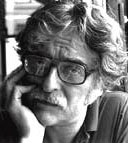 |
→ November 2006 Contents → Column
|
Nuts & Bolts
November 2006
|
 |
|
Color slide film, the first color film used for photojournalism in the newsmagazines, was easy to edit but hard to expose correctly. Digital images are even easier to edit and even worse to expose correctly.
Both mediums capture only about a five-stop brightness range, a nightmare for those who have grown up on black-and-white or color negative film. More important, with transparency or digital, overexposure reduces highlights to clear, informationless cellophane or its digital equivalent.
A dark color transparency is often reclaimable, sometimes even more desirable, in reproduction. However, a "dark" or underexposed digital image shoves a great deal of the image into that region of the digital record that holds less information. Simply brightening it up in Photoshop makes it look like (I have looked for a word from the technical photo glossaries and found none that does the job) CRAP. If, as a journalist facing a deadline, you shoot JPEG instead of RAW, it looks even CRAPPIER.
Fortunately, every professional-level digital camera has a tool that can serve as the best possible exposure meter: the histogram.
Most of the information in a digital image is carried by that area represented by the right side of the histogram, what we think of as the "bright" side. We maximize our technical quality by keeping as much of the image information as possible in that area.
Here are the important things to look for in the histogram.
(1) Hold the highlight detail. Don't let important highlight detail slip off the right side of the histogram into "cellophane" land.
(2) Adjust your exposure so you are giving the maximum exposure that preserves this highlight detail. Absolutely, do not just protect the highlight detail by underexposing. Underexposure leads to increased noise when it is corrected. The image manipulation that follows is more likely to produce posterization in addition to the empty shadows and other problems that occur with any underexposed image.
(3) If the scene ends up using less than the full range of the sensor, taking up only a portion of the full histogram, still keep the brightness range of the image on the right side of the histogram. Achieve rich dark values in Photoshop or any other "after-the-shoot" image processing program. In this way you eliminate using that part of the image that is most likely to produce noise or posterization when you make image adjustments.
(4) Shoot RAW. Of course it's often wise to double shoot and produce a large JPEG at the same time, one that sets appropriate color, contrast and sharpening controls ahead of time. If it turns out you don't have to do post-production work to achieve an excellent image - hooray, don't. More than likely, however, the JPEG will simply save your tail when the editor unexpectedly moves up the deadline.
I certainly do not recommend checking your histograms while covering riots. Fortunately, with some riots you can auto-bracket your exposures and pick the frame with the histogram that doesn't show blown highlights and is filled on the right side.
On features, check the histogram.
You will certainly encounter situations with a brightness range that exceeds the capturing power of the digital sensor. The parallel to color transparency film can give us some clues as what to do.
(1) Let the shadows go black. Proclaim loudly that the image is dramatic and has impact.
(2) Use fill flash. Here automatic flashes which can be set to deliver less than a full flash exposure take what used to be a complicated task and reduce it to child's play or skilled professional photographer's play - your choice of phraseology. Try setting the flash to deliver two stops less than its normal intensity. Tweak the results to match your equipment and taste.
The exposure automation and TTL meter that we first used in film cameras now show up in a lot of high-end digitals. With latitude-rich negative films this combination yielded a high percentage of good exposures. If you were a little beyond the push-and-pray automation, you went manual and exposed for the shadows.
That would be a disaster with a digital sensor. However you choose to do it, when you move off automatic, expose for the highlights. Yes, in the last decade digital photography has moved forward to a degree unimaginable and is now right back to Kodachrome.
© Bill Pierce
Contributing Writer
|
|
Back to November 2006 Contents
|
|